BELGIUM
Economy

Economy
Cities in BELGIUM
| Antwerp | Bruges | Brussels |
| Ghent |
Economy
General
From 1960 to 1974, Belgium experienced a growth phase in economic development. Growth then averaged 4.9% per year. In the recession period 1974-1988 there was a slow growth or even a few years (1975 and 1981) a contraction of the gross national product (GDP). At that time, the growth of the economy averaged only 1.7% per year.
Since 1974, the economic situation has also been characterized by a high inflation rate, high unemployment, a deteriorating state of public finances and a fluctuating balance of payments. Another important factor was the ever-increasing increase in government expenditure between 1960 and 1981. The growth rate of the public sector has slowed since 1981, influenced by the difficulties in public finances. Both in terms of employment and added value, the agricultural, forestry and fisheries, processing and manufacturing sectors have clearly lost importance compared to service activities. Significant growth was recorded in the financial sector, among others.
The increase in prosperity in the various regions is very uneven. If one looks at the turnover, the Flemish urban areas or urban regions have a business dynamics that is five times greater than in Wallonia; investments are four times greater in Flanders. Average per capita income is also very different: in Flanders, income is among the highest in Europe, while in Wallonia it remains below the European average. The Brussels region maintains its strong position.
In Flanders, the major economic drivers are Antwerp, Ghent and the Flemish periphery around Brussels. Liège and Charleroi were hit hard in Wallonia. The Antwerp-Genk-Brussels triangle is developing into one large business economic region with all the socio-economic problems that entails.
The geographical shifts are also important. The Flemish Region has experienced the strongest expansion and was also less affected by the economic recession. The provinces with important employment in the heavy industry (Hainaut and Liège) have experienced the greatest difficulties.
Public finances were balanced for the first time in fifty years in 2000. Reducing public debt has been high on the political agenda for years. Under pressure from the requirements for accession to the European Monetary Union, Belgium has successfully managed to reduce the deficits. The budget deficit was -1.5% in 2017 and the national debt 104% of GDP. Gross domestic product growth was 1.7% in 2017.
Agriculture and Horticulture, Fishing
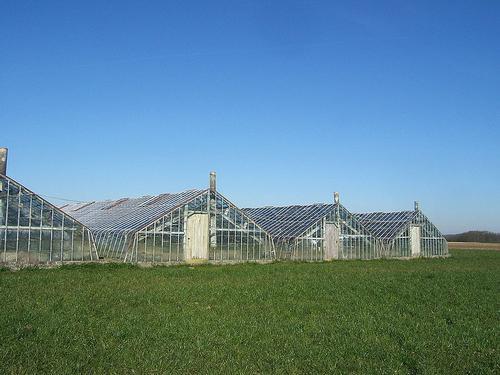
Over the years, the significance of agriculture and horticulture for the economy of Belgium has become less and less important. For example, the number of jobs has been greatly reduced due to, among other things, mechanization and the reduction of cultivated land. This sector is further characterized by specialization and economies of scale, particularly in Wallonia. Between 1970 and 1987, the number of farms nearly halved, while the average area per farm increased by almost 75%. There are currently approximately 64,000 agricultural and horticultural companies in Belgium. More than 95% of Belgian cultivated land is used for arable farming, pastures and grassland.
In 2017, the share of the agricultural sector in gross domestic product was 0.7 percent. Despite everything, the livestock has increased, in particular due to the strong increase in pig breeding. Compared to greenhouse horticulture, horticulture in the open ground has increased more. Vegetables occupy about half of the surface under glass and floriculture almost 30%. Approx. 600,000 ha of the Belgian surface is covered with forests, especially in the provinces of Luxembourg, Namur and Liège. Annual wood production fluctuates around 1 million m3, of which two thirds are coniferous wood. Belgium is one of the most important export areas for agricultural products for the Netherlands. In 2017, agricultural products accounted for 15% of total exports to Belgium.
Only sea fishing has commercial significance in Belgium: fishing takes place in the North Sea, Newfoundland and Icelandic waters. The main fish species supplied are cod, plaice and sole. Tongue is the most important in terms of value. The main fishing port is Zeebrugge, both in volume and value. Shrimp is caught along the coast, oyster farming in Ostend and Nieuwpoort. Under the influence of European fishing quotas, Belgian fishing has deteriorated sharply since the 1960s.
Mining
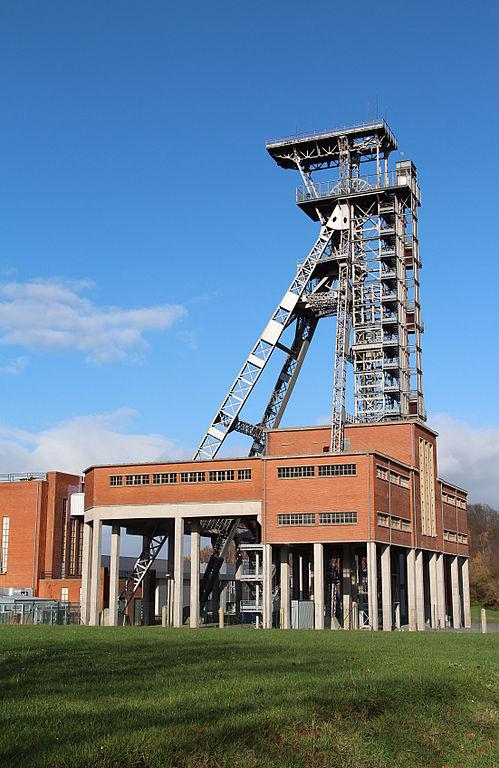 Mining BelgiumPhoto: Jean-Pol GRANDMONT CC 3.0 Unported no changes made
Mining BelgiumPhoto: Jean-Pol GRANDMONT CC 3.0 Unported no changes made
Coal extraction as well as the extraction of ores such as iron, zinc, lead and copper has lost all meaning in Belgium. The complete closure of coal mines was completed in 1992. In 1988, Belgian coal production was still 2.6 million tons compared to 11.4 million tons in 1970. Expensive subsidy policies and competition from oil, natural gas and nuclear energy have accelerated this downturn. Replacement employment for the many unemployed miners has been insufficient. Iron ore mining in Belgian Lorraine was only 94,000 tons in 1976, enough for only 0.5% of the total Belgian ore use.
The extraction of rocks is much more important than the extraction of ores. Mention can be made of Porphyry, an eruptive rock, quartzite, hard sandstone, hard slate for roofing, bluestone or bluestone, various types of marble such as black marble, red marble and gray marble, limestone for lime kilns and cement factories, chalk, mainly used in the lime kilns and the cement industry, lime phosphate, the extraction of which gave rise to the superphosphate industry, clay and clay for brickworks and pan factories, clay suitable for pottery and refractory materials, sand for the construction industry and white sand as raw material for the glass industry.
Energy supply
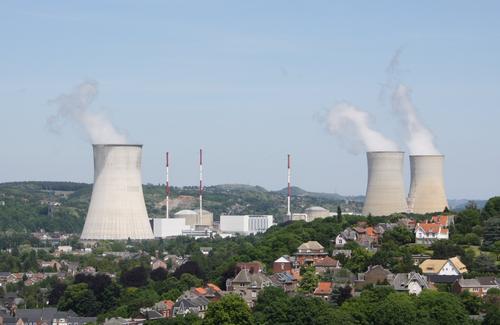
The energy sector is very important for industry in Belgium, especially the metal and chemical sector. Industry is the largest consumer of energy, followed by household use and then other businesses. Most energy is obtained from nuclear energy, which is used exclusively for the production of electricity.
In addition, energy is produced from petroleum, coal, coke, natural gas, hydropower and alternative energy sources. Because Belgium itself does not have fossil fuels, people are very dependent on foreign countries.
Natural gas entered the Belgian market in 1966 and is mainly imported from Norway, the Netherlands and Algeria. Petroleum from the Middle East (including Saudi Arabia, Libya, Iran), Norway and Eastern Europe. Belgium plays an important role as a distributor of natural gas for the EU countries.
Since 1991, coal mines are no longer in use in Belgium. What is still consumed in coal is imported from abroad as an energy source.
Industry
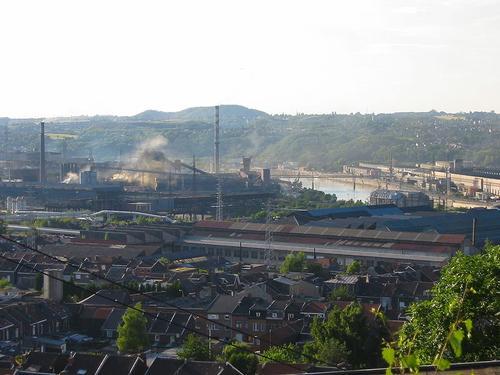
Around 1800, the center of gravity of industrial activity was still in the Dutch-speaking part of the country: the textile industry. The industrial revolution and the exploitation of the coal ponds of Wallonia shifted industrial activity towards the south and the region of Liège. Since 1900 and especially after the Second World War, the industry developed faster in the northern provinces.
Among the factors that contributed to the post-war shift, the exploitation of the Campine coal basin, the changes in the energy balance, the better demographic conditions in the Flemish region, the geographic location and the location of branches of foreign companies, should be mentioned, partly helped by active government intervention.
The strongest industries in Belgium are the food industry, the chemical industry, the car industry and the technologically advanced production in metallurgy, the machine industry and electronic equipment.
The transport equipment industry is the most important metalworking industry in Belgium. It mainly consists of car assembly companies and 250 suppliers to the car industry. Every year 1 million passenger cars are assembled, of which approximately 95% are exported. In addition, trucks, trailers, buses and trailers are produced. In addition, there are some large Belgian manufacturers of tram and railway equipment, such as Alstom and Bombardier.
In 2000, construction contributed 4.7% of gross domestic product and is also important for employment. In 2000, 237,000 people were employed in construction, and in the late 1990s, there were just over 70,000, often small, companies.
The chemical industry is one of the most important industries in Belgium. Approximately 100,000 people work in mainly medium-sized and small companies. The chemical industry's main trading partners are Germany, France, the Netherlands, the United Kingdom and Italy. Two-thirds of the chemical industry takes place in Flanders and one-third in Wallonia.
The textile industry is not only one of the largest industrial sectors, but also one of the largest employers. After Italy, Germany, France, the United Kingdom, Belgium ranks fifth in Western Europe in terms of market turnover. The interior, textile and technical textile subsectors are the most important. 70 percent of the production is intended for export.
High-tech companies are active in mechanical engineering (mechanics and mechatronics). including manufacturers of machines, equipment and parts. Furthermore, many companies that focus on supply to industry, inspection and certification and maintenance and repair. Almost 70% of the production goes abroad.
The metal industry in Belgium is divided into the sectors of non-ferrous metals, metal products, plastic products, machine industry, electrical engineering and electronics, the ICT sector, the car industry and aerospace and defense and security.
The formerly strong steel industry in Wallonia has struggled in recent decades, despite government support. As a result of the rollback of government aid, considerable restructuring has taken place in the steel industry, and the largest Walloon steel company Cockerill Sambre was more than half owned by the French steel group Usinor.
The oil industry is made up of two industries, namely the processing of imported crude oil and the marketing of refined products. The oil and petrochemical industries have developed near the ports of Antwerp and Ghent. The port of Antwerp, after Houston in the United States, ranks second in the world ranking of petrochemical centers.
The imported crude oil is processed in Belgium by twelve export-oriented refineries. The sector consists of international companies as well as independent importers, traders, and small and medium-sized companies. As a result of the second oil crisis, when energy saving and the switch to other forms of energy became increasingly important, activity in this sector has deteriorated considerably.
Trade
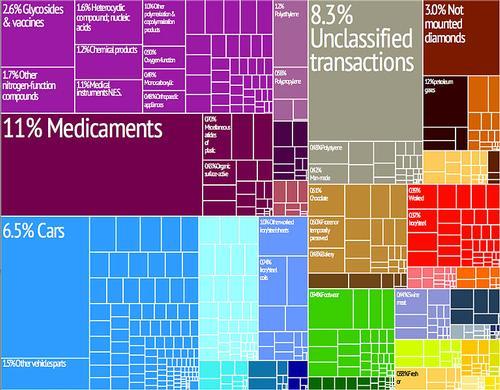
The Belgian economy is very focused on international trade and exports therefore contribute more than 70% to GDP.
The Belgian economy is an open economy, in which prosperity is highly dependent on foreign trade. Belgium has the largest dependence coefficient within the EC countries, after Luxembourg. Foreign trade has expanded since the 1960s. In 2000, total imports into Belgium amounted to EUR 202,426 million and total exports from Belgium amounted to EUR 186,728 million.
The Netherlands has long been the most important buyer of Belgian products. Since the 1970s, these have been Germany and France, as well as England and Italy. The main import partners are Germany, France, the Netherlands, the United Kingdom and Italy.
Transport
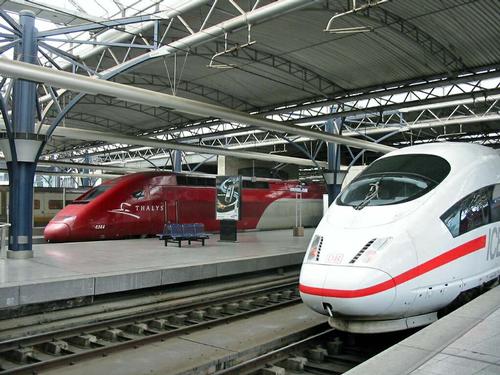 High Speed Trains BelgiumPhoto: JH Mora CC 3.0 Unported no changes
High Speed Trains BelgiumPhoto: JH Mora CC 3.0 Unported no changes
The traffic sector is of great importance for the Belgian economy. The development of the transport sector is greatly enhanced by the high population density, growing industrial and commercial activity and the development of the European Union. Passenger transport was already strongly promoted in the nineteenth and early twentieth century by the expansion of the railway and neighborhood rail network. In 1860, Belgium already had 5000 km of railway lines, and the neighborhood railway network reached the same length just before the First World War. As a result, the railway had a major influence on the spatial distribution of residential and work facilities. The use of public transport peaked around 1960. However, the significant increase in mobility subsequently came entirely from the growing number of passenger cars.
At the end of 1988, the railway network of the National Company of Belgian Railways still had a length of 3,554 km, of which 2,240 km were electrified. The thorough reform of the rail offer in 1984, with the introduction of intercity and interregional connections, has consolidated longer-distance transport and curtailed production costs.
The government plan STAR 21 includes restructuring of the entire rail system in Belgium, with expansion and modernization of the existing railways, railway works and stations, but also the completion of the Belgian part of the HST route Paris-Brussels-Cologne-Amsterdam.
Urban public transport is operated by Intermunicipal Transport Companies, subsidized by the State until 1988 and by the Region concerned from 1989 onwards. In the period 1963-1988 a lot of money was spent to equip the large agglomerations, especially Brussels, Antwerp and Charleroi, with a metro or pre-metro network. In 1991, the Flemish Transport Company De Lijn was established, which is responsible for urban and regional transport in the Flemish Region. Local services continued to exist in the Walloon Region and in Brussels. Only Brussels has a real metro. Regional transport was less and less meeting a real need: the number of travelers fell from 306 million in 1980 to 244 million in 1988 and to 242 million in 1990. The qualitative decline in services, the traffic difficulties in the inner cities, the sharp fare increases and the reduced government contributions were the main cause of this decline.
The stagnant public transport was offset by the enormous expansion of car traffic. Belgium has the densest road network in the European Union per 100 square km: 462 km, and in the world in addition to Hong Kong, Macau and Singapore. Belgium also retains first place for motorways; just before the Netherlands: 55 km per 1000 km2.
In Belgium there are five major airports, Zaventem near Brussels, and the smaller regional airports Antwerp-Deurne, Charleroi-Gosselien, Liège-Bierset and Ostend Airport. Air traffic expanded strongly, partly due to the democratization of passenger traffic, especially in tourist flights. Zaventem takes fifth place in Europe in terms of freight transport and Bierset is in twelfth place.
Freight transport was strongly influenced by the expansion of port activity and the industrial movements that favored mass transport rather than diversified international road transport. The forms of combined transport developed strongly, while transport was also increasingly approached as a link in an integrated production chain.
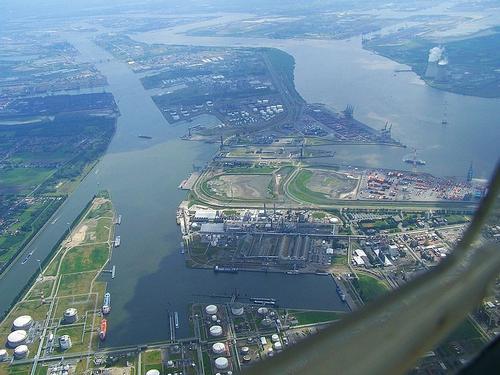
Belgium has four seaports: Antwerp, Ghent, Zeebrugge and Ostend and three major inland ports: Brussels, Liège and Charleroi. The port of Antwerp is the largest port in Europe after the port of Rotterdam. Antwerp is primarily a container port; about 60% of general cargo transport is supplied in containers. The enormous efforts to expand Zeebrugge is primarily a transit port and specialized in container port and roll-on-roll or transport. The port of Ghent is a medium-sized seaport with a number of industrial specializations. The port of Ostend is the smallest seaport and specializes in roll-on roll-off transport, transshipment and transport of sand and gravel.
Inland waterway transport has been faced with overcapacity across Europe and the aging of the fleet of mainly smaller ships, the majority of which are owned by single-ship skippers. The Belgian inland waterway network is 1506 km long, of which 406 km is navigable for ships of 1350 tons and more.
Tourism
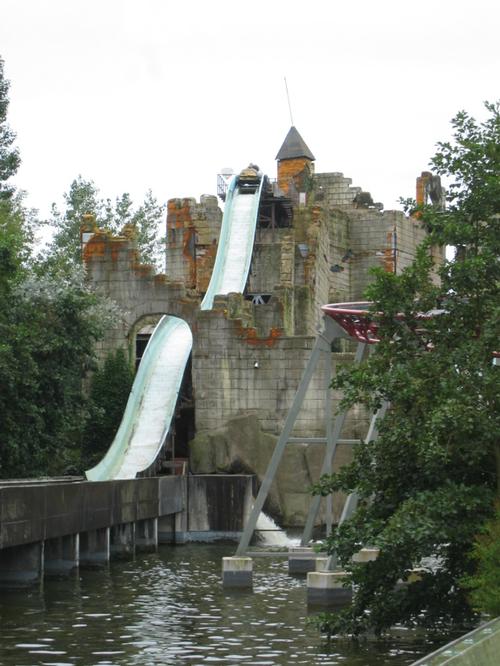 Plopsaland BelgiumPhoto: Public Domain
Plopsaland BelgiumPhoto: Public Domain
Due to the increased prosperity and increasing leisure time, tourism has also grown in importance for the Belgian economy since 1950. This is evident, for example, from the sharp increase in interest in recreational areas of all kinds (one-day tourism), but also from the number of overnight stays in Belgium. The main tourist areas in Belgium are: the coast: 26.6%; art historical cities (Antwerp, Bruges, Brussels, Tournai, Ghent, Leuven, Liège, Mechelen and Tongeren): 20.8%; Meuse and Ardennes: 22.5%; Kempen 18%; other tourist municipalities 12.2%.
The Ardennes attract tourists in both summer and winter. This area has an average of 40 to 75 snow days per year and has slopes for alpine skiing and cross-country trails.
Other econimic activities

Belgian retail is more like French retail than Dutch. Shopping centers outside the city can be found both in France and in Belgium, originating from large supermarkets or hypermarchés. The Belgian retail trade is dominated by foreign companies, especially in the food and clothing sector.
Belgium was one of the first industrialized countries in Europe, but has developed much more into a service economy in recent decades. In 2017, services in Belgium contributed 77% to GDP. Many services are related to industry, varying from payroll companies, accountancy, legal services, call centers and consultancy. The service sector with many Belgian and also foreign companies is mainly located in the Brussels region, mainly because of its central location in Europe and the proximity of the many bodies of the European Union. Financial services make an important contribution to the gross national product. The many small banks in Belgium have grown into large groups through mergers with Dutch and French banks in particular.
The Belgian food sector with its many small companies ranks third in total Belgian industry in terms of turnover. Approx. 80% of exports go to EU countries.
Sources
Belgium, a way of life
Lannoo
European Union: fifteen country documents
European Platform for Dutch Education
The Stateman's Yearbook: the politics, cultures and economies of the world
Macmillan Press Limited
CIA - World Factbook
BBC - Country Profiles
Last updated December 2025Copyright: Team The World of Info